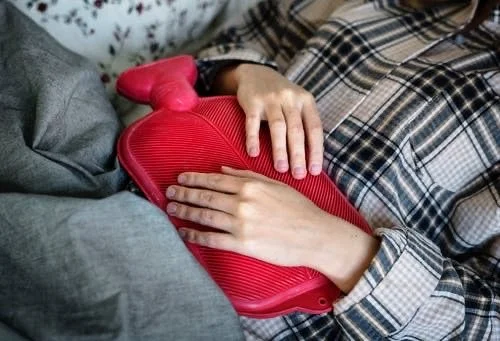Menstrual pain is extremely common, but it’s often not reported at doctor visits. Why is this? Perhaps women just accept menstrual pain as part of the burden of being female, or we don’t expect our pain to be taken seriously, or maybe we are too embarrassed to talk about it. (There is a lot of ancient lore and superstition in many cultures associated with the female menstrual cycle). Period pain can be extremely debilitating for between 2 and 29% of women: the reason for that huge spread is that many women don’t report it.
Read MoreWhen considering changes that need to be made in order to have a healthy lifestyle, nutrition, physical exercise and sufficient sleep are usually the first things that come to mind. But stress management can also play a critical role. This is because of the many ways that chronic stress undermines good health.
Read MoreHyperthyroidism is a set of conditions that result in overactivity of the thyroid, a butterfly-shaped gland located in the front of the neck below the Adam’s apple. This is the opposite of hypothyroidism (or thyroid underfunction), which is far more common. Hormones produced by the thyroid affect many important body functions including lipid metabolism and carbohydrate metabolism, growth, the cardiovascular system and the reproductive system.
60 to 80% of hyperthyroidism cases result from Grave’s disease, an auto-immune condition that tends to run in families, occurs more often in women and frequently peaks between 20 and 40 years of age.
Read MoreAbout 30% of adults report insomnia at any one time, with 10% suffering from chronic insomnia. Women as well as people over 60 tend to be more affected. There can also be grave consequences, including a range of other chronic health conditions (such as diabetes, high blood pressure and weight gain), unproductive work lives, car accidents and fatalities. For these reasons, insomnia is considered a serious public health problem.
Read MoreBreastfeeding a baby can be a satisfying experience, healthy for both baby and Mom. But the joy of this experience can be quickly thwarted by mastitis, a relatively common, painful and debilitating acute infection of the breast that affects between 10 and 30% of breastfeeding women. With the right care mastitis can often resolve on its own, but if neglected it can lead to a more serious infection, and can also cause women to prematurely stop breastfeeding because of the pain and discomfort.
Read MoreThis 2-part series discusses what is involved with “lifestyle change”, which many of us have been advised by our doctors or other health care providers to do. In Part 1, we first reviewed the overall contributors to health and disease: genes, environmental (including social and economic) factors, epigenetic factors (if or when certain genes are turned off or on) and, of course, lifestyle. We then focused specifically on two aspects of lifestyle: stress management and physical exercise. Part 2 focuses on another important aspect of lifestyle change necessary for attaining better health: nutrition.
Read MoreThose with chronic health conditions are frequently told by health care providers (and others) that they will see significant improvement in their health if they change their lifestyle. But which health conditions might these changes help? And what exactly does “lifestyle change” mean, what is involved, how easy is it, and how long does it take?
Read MoreMost women know (or remember) the uninvited friend who visits just before their period every month: the moodiness, bloating, insomnia, headaches, breast tenderness and other annoying symptoms. While as many as 75% of women experience disruptive symptoms related to premenstrual syndrome (PMS), only a small proportion, around 5-8%, are considered to have symptoms that are “clinically significant”. A comparable proportion, 3-8%, experience the most severe symptoms of Premenstrual Dysphoric Disorder (PMDD), which are mostly behavioral and addressed as a psychiatric disorder.
Read MorePrediabetes means that your blood sugar levels are not quite high enough for a diagnosis of Type 2 Diabetes. More than 1 in 3 Americans— about 88 million people-- have prediabetes, and of those, more than 84% don't know it. Even more alarming is that 1 in 5 adolescents and 1 in 4 young adults are now prediabetic. Almost all cases of Type 2 Diabetes are preceded by prediabetes. Despite these alarming numbers, the good news is that the progression from prediabetes to diabetes is not inevitable: you can take steps to reverse it.
Read MoreFor most women, “that time of the month” or the days leading up to it are not their favorite. But menstruation is a sign of our ability as a species to reproduce, which is why the absence of a monthly period (“amenorrhea”) in girls and women from about 16 to 45 years old who are not pregnant is a health problem.
Read MoreThe thyroid is a gland shaped much like this butterfly that is located in the front of the neck below the Adam’s apple (for a man). It is one of many important endocrine glands that manage the body’s hormone system. Hormones produced by the thyroid affect many body functions including lipid metabolism and carbohydrate metabolism, growth, the cardiovascular system and the reproductive system.
Read MoreFor most women it’s a fairly predictable event that is easily incorporated into daily life. And then there are others-- about 30% of women-- who experience periods that are not predictable and cause major disruption, not only to daily life but to special events, vacations, etc..
That said, irregular periods occur normally at certain times during a woman’s lifetime. When the period starts, typically between 10 and 15 years old, it can take several years to become established as a regular pattern. Of course, menstruation also stops during pregnancy and often remains suppressed during breast-feeding as well. Finally, irregular periods also occur leading up to the time of menopause.
Read More












